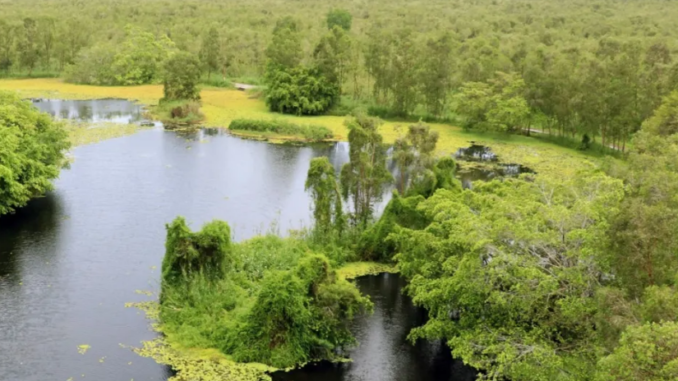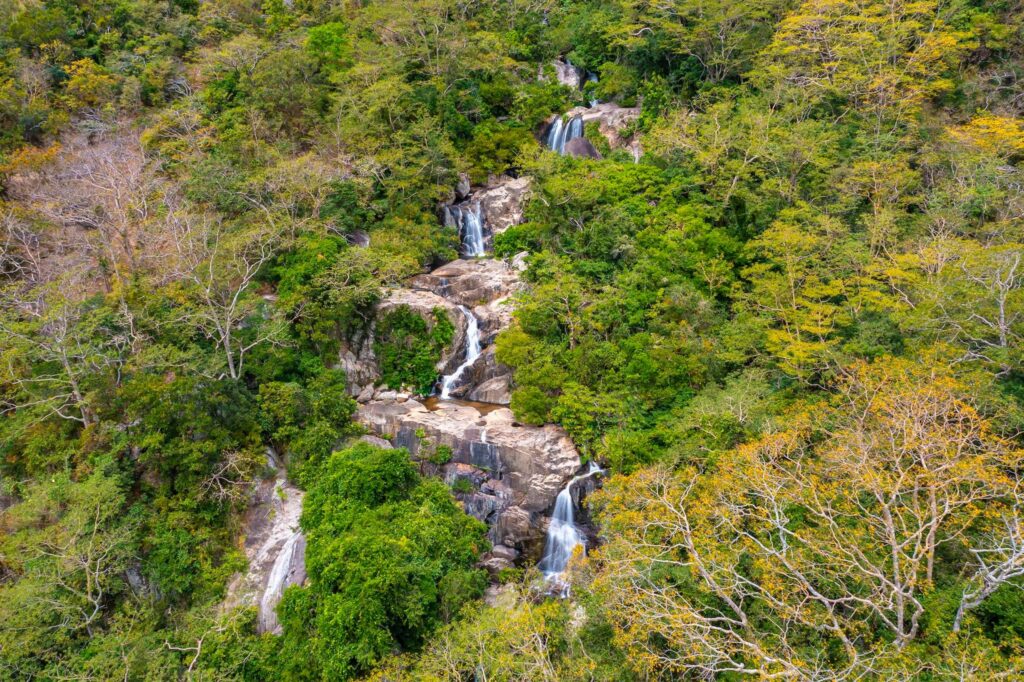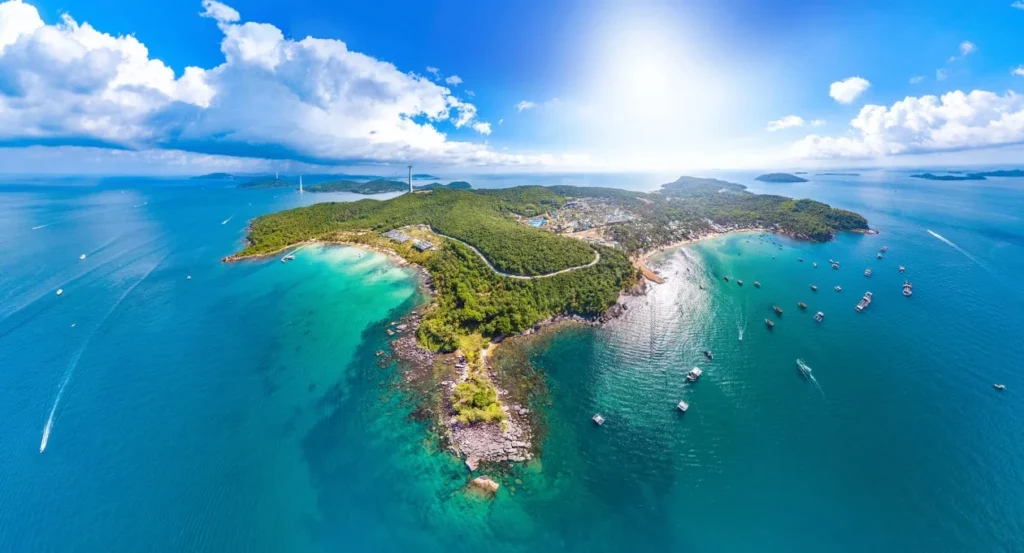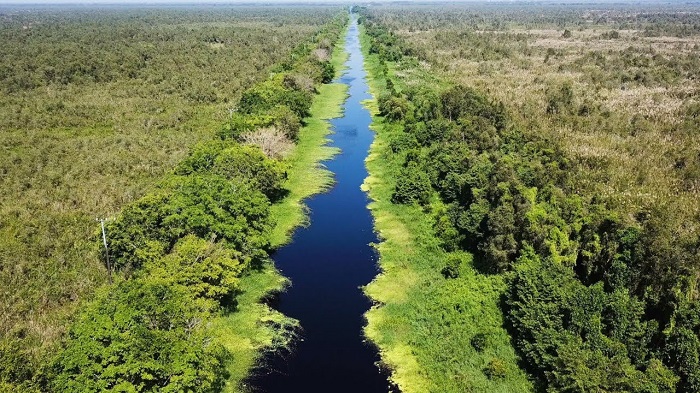
Nestled in southwestern Vietnam, the Kien Giang Biosphere Reserve is a UNESCO-designated natural treasure renowned for its exceptional biodiversity and diverse ecosystems. Spanning over 1 million hectares, the reserve encompasses a captivating tapestry of landscapes, from pristine mangrove forests and lush tropical rainforests to idyllic coastal islands and vibrant coral reefs. Home to an incredible array of flora and fauna, the Kien Giang Biosphere Reserve stands as a testament to the interconnectedness of life and the importance of preserving our planet’s natural heritage.
Unique feature
The biosphere protects a system of 105 islands (Phu Quoc is the largest), which have remained a critical habitat for hundreds of plant and animal species, including endangered species. The surrounding ocean has been so well protected that fishing remains a primary industry without causing damage to the balance of the local ecosystem. The marine life and resources in this area, especially squid, cuttlefish, and anchovies, are considered some of the best in the entire southwest region of Vietnam and are critical to local livelihood.
Ecosystem in the National Park
More than half of the northern part of Phu Quoc Island is devoted to Phu Quoc National Park, the terrestrial reserve zone of the UNESCO biosphere reserve. A hike through the dense evergreen forest takes travelers through a web of intricately layered ecosystems and climate zones cascading down the mountain range. Primeval forest merges with secondary and indigo forests; lowlands flood into wetlands; mangrove trees and seagrass protect coastal mudflats and waterways; rare orchid species grow alongside medicinal plants.

Bird watchers will be busy with more than 200 different native bird species, while photographers with keen eyes should keep a lookout for rare wildlife such as macaques, loris, and langurs. Visitors unconcerned with genus or species will nevertheless enjoy being submerged in the birdsong cacophony of uninhibited nature.
Trek to the top of Mount Chua (“God Mountain”, also known as “the roof of Phu Quoc”) to see the forest extending to a watery blue horizon in an infinity of green hues. If Mount Chua is closed for construction, Mount Heaven is the second-highest peak and a worthy alternative, with a name that suits the views. The half-day hike is rewarding from beginning to end, as swimmable streams and charging waterfalls irrigate the forest landscape in the rainy season.
Marine ecosystem
The cerulean waters surrounding Phu Quoc and its dozens of island neighbors are home to their diverse ecosystems. A complete 41% of the area around these islands comprises a system of hundreds of species of hard and soft coral and the fish that occupy them. The seaweeds and seagrass beds that flourish here provide essential habitat for critically endangered animals like hawksbill and green turtles, as well as the dugong, a marine species on the brink of extinction that can only be found in one other place in Vietnam.

Water sports and activities are the best way to get intimate with nature in Phu Quoc. Snorkeling opportunities are abundant and tropical fish – unthreatened by humans here in their protected habitat – are both colorful and abundant. Get PADI certified to take the experience to the next level, and explore the biosphere to its depths on a scuba dive.
Beaches mark the border of the two regions. Each island of the biosphere has its unique beaches, shaped by different tides, ecosystems, and geological histories. Phu Quoc Island – the largest of them all and a beach destination at its heart – has some of the longest and prettiest stretches, including the popular Sao Beach, which is bracketed to the north and south by jungle. To combine wildlife observation with swimming and sunbathing, head to “Starfish Beach” near Rach Vem Village, where starfish cluster on rocks under the clear water. On lucky nights, it’s possible to see bioluminescent plankton illuminating the transparent water, yet another artful contribution to the biosphere.
Benefits to community
The fields and professions of tourism, agriculture, fisheries, forestry, etc. bring great economic value. Economic activities in the Kien Giang World Biosphere Reserve have brought benefits to local communities, preserving natural values and ensuring environmental quality. Specifically, expanding the scale and diversifying types of tourism, such as: eco-tourism, community tourism, scuba diving, environmental education, and event conference tourism. Support economic development associated with the Kien Giang World Biosphere Reserve brand, collective brand, and geographical indication. Planning to develop models of aquaculture and seafood exploitation sustainably, minimizing impact on the environment, less affecting biodiversity, and increasing product value. Transferring and applying scientific and technical achievements to life and production, contributing to improving life, increasing income, and creating new livelihoods for the community. Attract domestic and foreign investment sources, contributing to local socio-economic development.

Along with that, Kien Giang World Biosphere Reserve has also built and strengthened cooperative relationships with many domestic and international scientific and conservation organizations. Kien Giang World Biosphere Reserve is also a key scientific research focus of most research institutes and universities not only in Vietnam but also in many countries around the world, focusing on resource research, environment, and biodiversity protection.
Conclusion
Kien Giang World Biosphere Reserve was recognized by UNESCO on October 27, 2006, with a total area of 1,188,106 hectares, the second largest biosphere reserve among Vietnam’s 9 biosphere reserves. Kien Giang Biosphere Reserve stands as a testament to the importance of preserving our planet’s natural heritage. Its exceptional biodiversity, diverse habitats, and ecological significance make it an invaluable resource for both conservation and sustainable development. By continuing to protect and manage this unique ecosystem, we can ensure its continued health and vitality for future generations.
Get an opportunity to visit the Global Biosphere Reserve in Vietnam through Vietnam E-Visa!